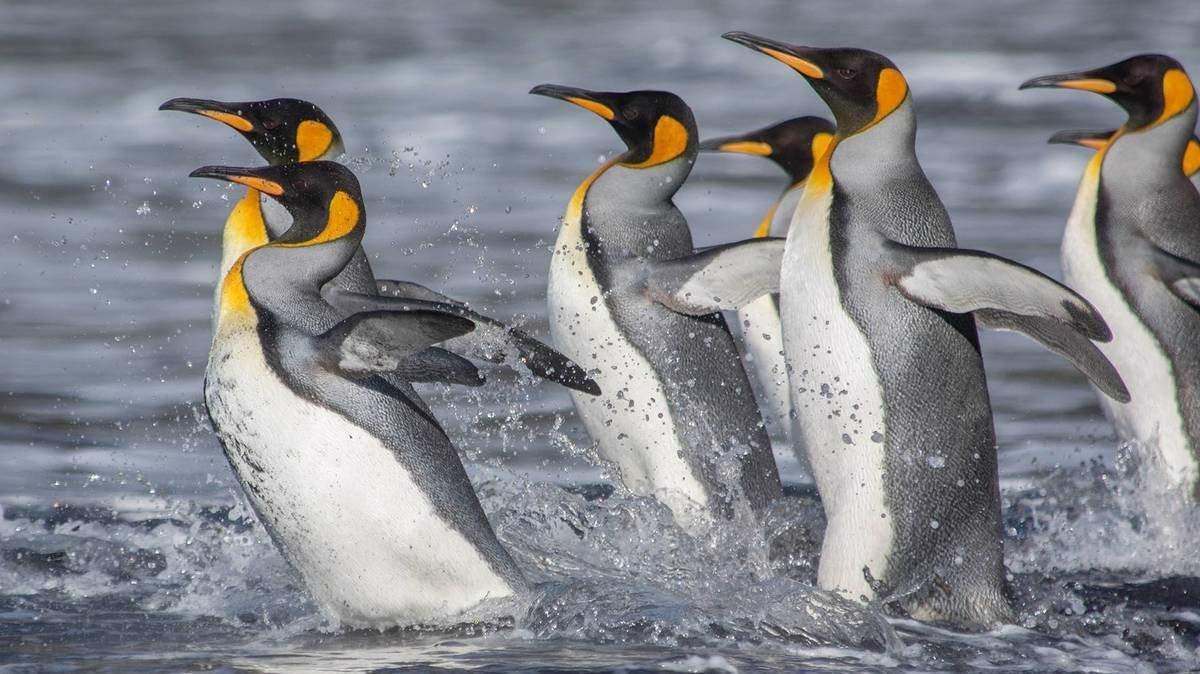Jan 7 2021
The Antarctic may soon become a greener region and could be colonized by new kinds of species in the days to come. However, at the same time, certain species are likely to vanish.
 King penguins live on the edge of the Antarctic and thus react sensitively to environmental changes. Image Credit: Ryan Reisinger.
King penguins live on the edge of the Antarctic and thus react sensitively to environmental changes. Image Credit: Ryan Reisinger.
25 scientists have presented these predictions and several other findings in a leading international project, wherein they examined scores of Antarctic-related articles published in the last decade. By doing so, the researchers have given a remarkably in-depth assessment of present-day conditions and also about the future of Antarctica and the Southern Ocean surrounding it.
In the past 10 years, researchers have never made so many latest findings on the ongoing biochemical and biological processes in the Antarctic. Now, a total of 25 researchers, headed by the Alfred Wegener Institute Helmholtz Centre for Polar and Marine Research (AWI), have studied and compiled those results in the project titled “AnT-ERA.”
After processing several hundred articles related to the Antarctic, the researchers have narrowed down the content into 10 central messages that address a wide range of aspects, for example, biodiversity, ocean acidification and the importance of sea ice for various organisms.
"If you look at the timeframe from 1970 to the present, roughly 80 percent of all academic publications on biology and biochemistry in the Antarctic were released between 2010 and 2020. That’s what moved us to condense this enormous amount of knowledge into a single article."
Julian Gutt, Project Coordinator and Marine Biologist, Alfred Wegener Institute
The study results were recently published in the Biological Reviews journal.
Increased Biodiversity
The researchers have made one crucial finding—the Antarctic waters are bound to grow warmer because of climate change, which consequently raises the possibility that animal and plant species from warmer areas will move to the Antarctic region.
This means that not only the temperature but also the upcoming sea-ice cover will be equally significant. For instance, in the future, the researchers expect to witness a more robust greening of ice-free coastal regions at the time of the southern summer, as new lichens or mosses migrate.
At first, biodiversity would probably increase but an extended warming would lead to serious consequences, especially for those species that are acclimatized to very low temperatures.
"We believe these species will retreat to the last remaining extremely cold regions of the Antarctic. That also means we’ll need to protect the regions in order to save these species."
Julian Gutt, Project Coordinator and Marine Biologist, Alfred Wegener Institute
Learning to Live in Acidic Waters?
With regard to ocean acidification, the study’s prediction is not encouraging: toward the end of the century, the researchers believe that Antarctic waters will be widely acidified.
“There can be no doubt that especially those organisms that form calcareous shells are going to have serious problems. We can’t yet say for certain if they will all go extinct, or if some species will manage to adapt their metabolisms to the new conditions,” explained Gutt.
The team made an unexpected finding from the studies performed in the last decade—the apparently docile species, for example, certain ascidians and sponges, that live on the Antarctic Ocean floor quickly respond to enhanced conditions and they do this by reproducing intensively or growing rapidly.
However, this also has a drawback—the species are also responsive to poor environmental conditions. Considering the significant changes that would be brought by climate change, such organisms could also be in danger.
The Antarctic Peninsula, which spreads into the South Atlantic, has been warming for some time lately, but in the last three years, the warming, and thus the loss of sea ice, has extended to East Antarctica.
The researchers are yet to decide whether this is the start of a long-term trend, or just a short-term change. In both cases, this variation in the physical environmental parameters poses an issue because it could have a considerable effect on the upcoming development of life thriving in the Southern Ocean.
How Much CO2 can the Antarctic Swallow?
Scientists are still uncertain whether or not the loss of sea ice will imply that Antarctic waters, caused by the intensified growth of alga, absorb more atmospheric carbon dioxide (CO2).
Generally speaking, the majority of the experts believe that when sea ice retreats, there is a rise in algal growth, because these species, for example, are subjected to more amount of sunlight.
Since algae are able to absorb atmospheric CO2 through photosynthesis when they develop, a process like this can enhance the ocean’s ability to absorb this gas. For some time now, basic forecasts have denoted that the algae present in Antarctic waters could absorb 25% more CO2 if they become entirely ice-free in upcoming southern summers. But the new study demonstrates that such blanket statements are rather worrying.
"The publications we analysed make it clear that the situation varies considerably, depending on the geography. But at least we now know which waters and which parameters we need to focus on to find the answers."
Julian Gutt, Project Coordinator and Marine Biologist, Alfred Wegener Institute
Clear-Cut Messages
The researchers mainly attribute the fact that so many latest insights have been collected in the recent past to technological developments—for example, in new ships and stations, molecular biological techniques and remotely operated underwater vehicles, a few of which can also navigate under the ice.
New conceptual and numerical models are also helping people to figure out the interconnections in the ecosystem. According to Gutt, the greatest contribution of the study is the fact that all the 25 experts have successfully agreed on the 10 central messages that clearly convey the central findings and provide a glimpse of the days to come.
Journal Reference:
Gutt, J., et al. (2020) Antarctic ecosystems in transition – life between stresses and opportunities. Biological Reviews. doi.org/10.1111/brv.12679.